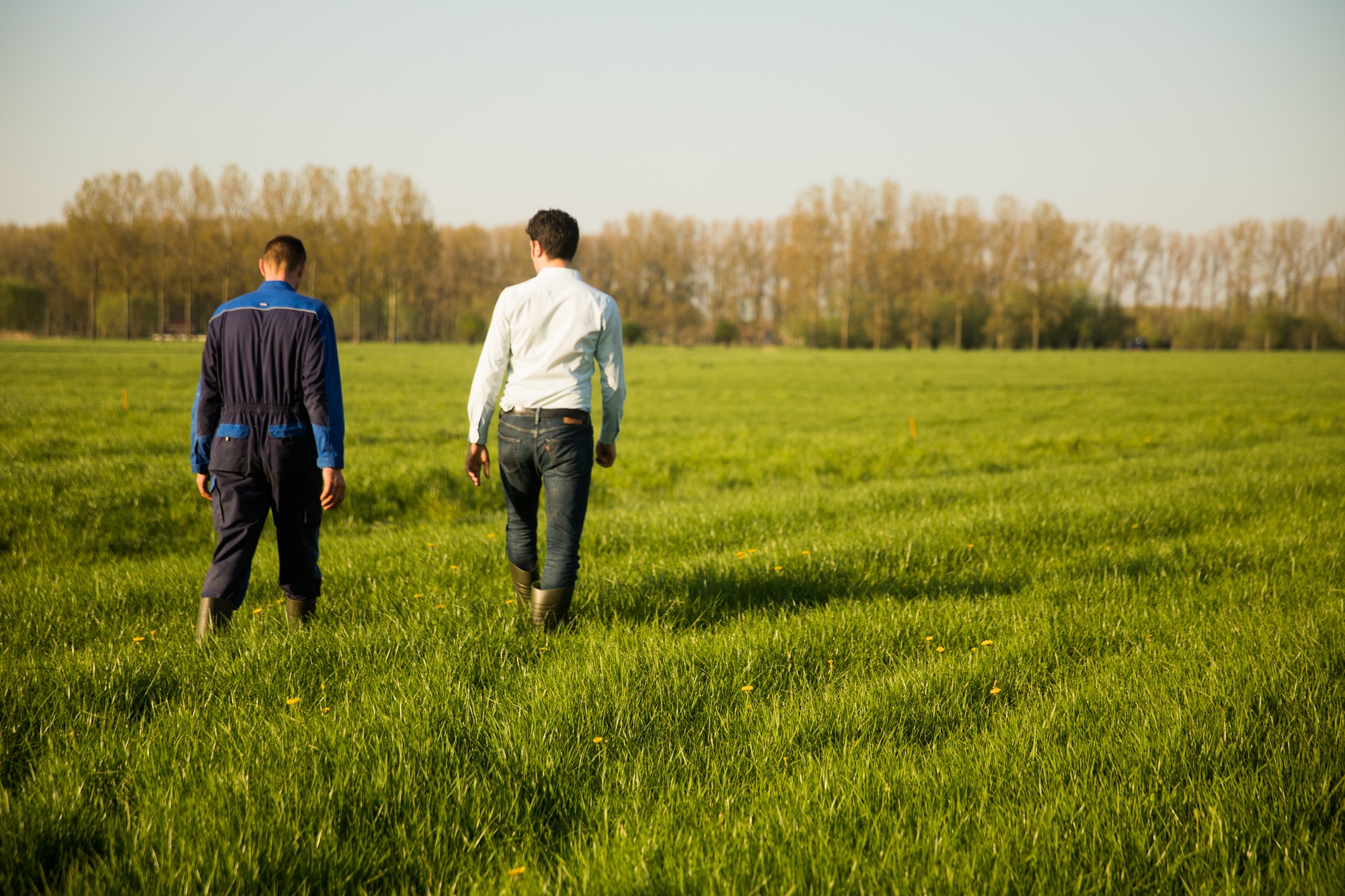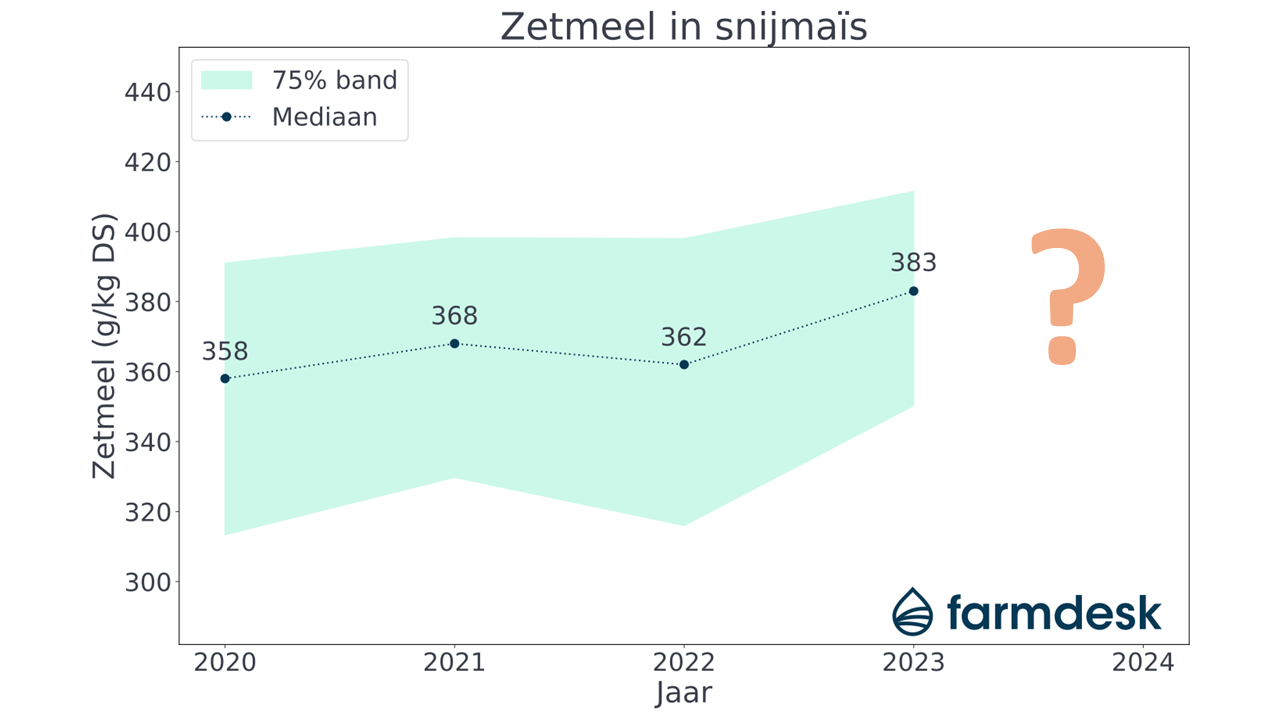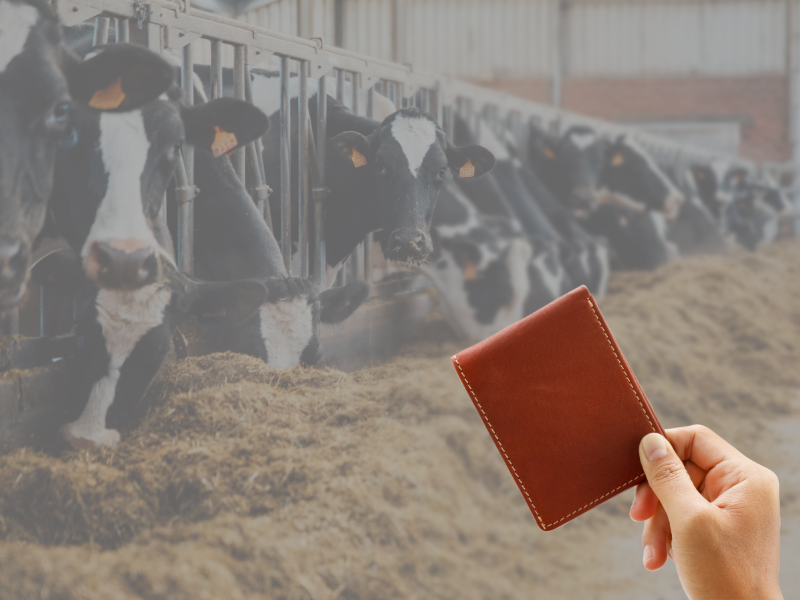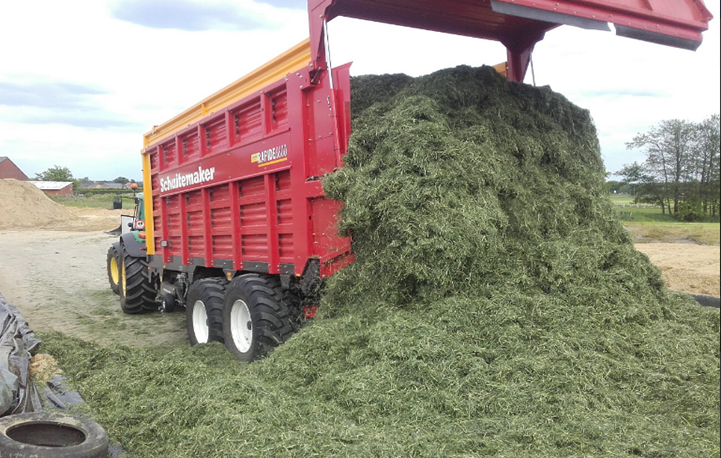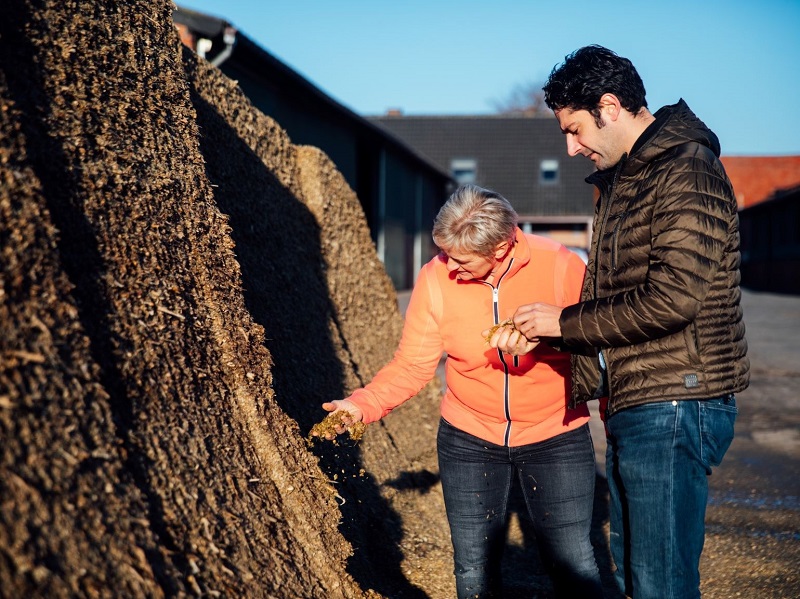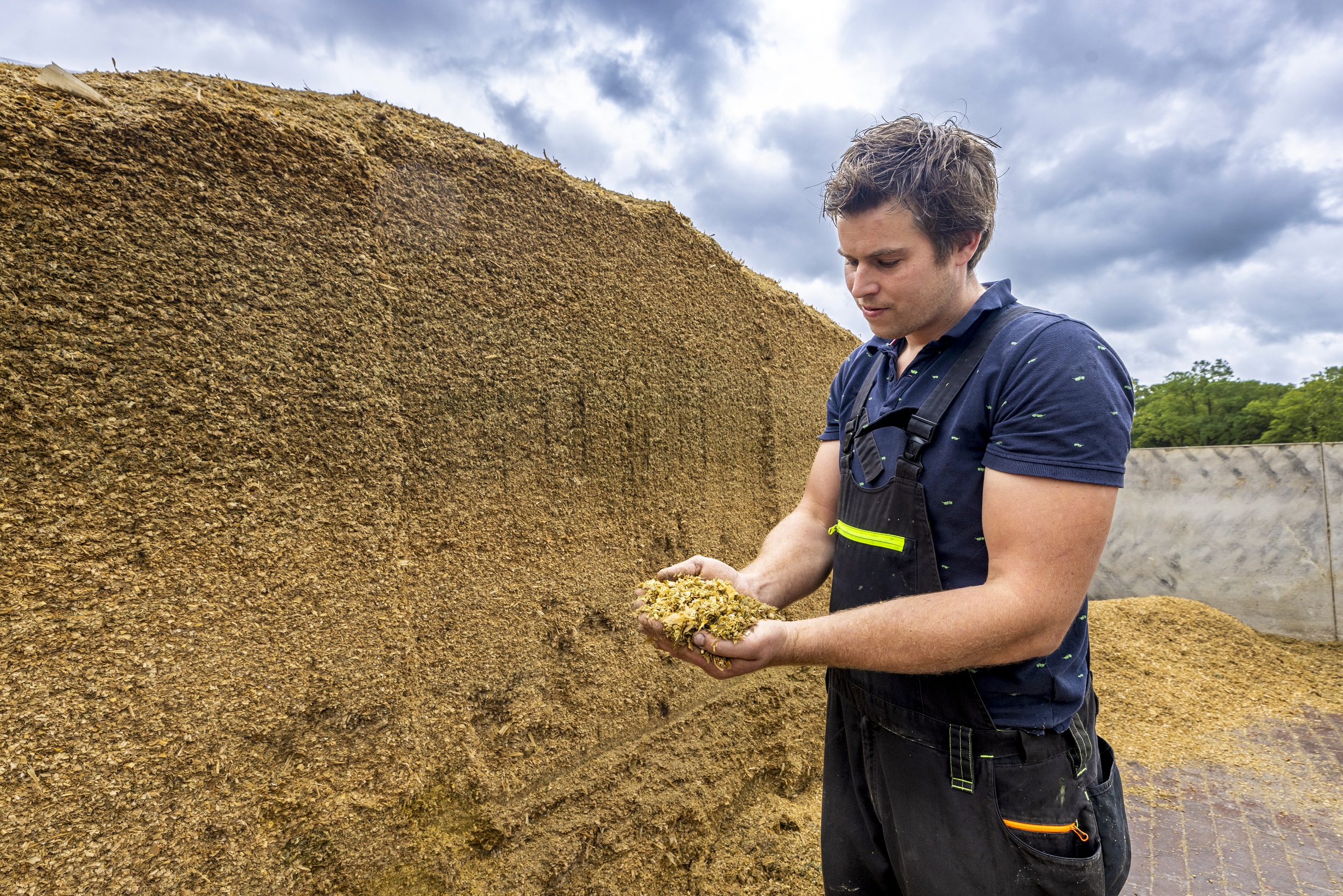In the example below, we calculate the impact of currently high fertilizer prices. For simplicity, we calculate only the effect on grassland.
Summarized for a standard farm of 120 dairy cows with 27 ha of grassland:
- Current fertilizer prices cause a feed profit drop of ~6,000 € on an annual basis.
- If less fertilizer were spread, compensation must be made with additional (expensive) protein-rich feed. This gives a additional income drop from €5,000 to €11,000 (on top of the €6,000). So not a good plan.
- At these high prices, leguminous crops (e.g. grass clover) are becoming more and more interesting because of their nitrogen-fixing capacity. This allows one to save on fertilizer without sacrificing protein content in the grassland.
Impact fertilizer prices for grassland
On average, we can assume a grassland fertilization of 700 kg KAS per ha per year (300 kg KAS first cut, 250 kg KAS second cut and another 150 kg KAS third cut). This provides 189 kg of nitrogen per hectare (700 kg KAS x 27%N), which in turn accounts for 1181 kg of protein per hectare (189 kg N x 6.25).
For simplicity's sake, we assume historical KAS prices of 200 €/ton while they are now 600 €/ton. If we spread this 700 kg KAS per ha, this comes to a cost increase of 280 €/ha. Assuming a grassland yield of 12 tons DS/ha, the price of home grown grass silage increases by ~23 €/ton DS.
Impact on annual feed profits
The net impact on annual feed profit (balance) can be easily calculated in the Farmdesk Crop & Feed Planner.
We assume the average Farmdesk farm with 120 lactating cows (9,800 kg milk/year) plus young stock on 52 hectares of land, of which 27 hectares are grassland.
A yield of 12 tons DS grass/ha gives 6.42 kg DS grass per lactating cow per day (Farmdesk also takes into account silage losses and grass intake by young cattle and dry cows). We assume an average crude protein content of 175 g/kg DS throughout the year.
A cost increase of 280 €/ha for this grassland results in a feed cost increase of 44 €cent/100 kg of measured milk. On an annual basis, this means a decrease in net feed profit of 6,248 €/year.
Fertilize less?
If we were to reduce this 700 kg KAS per ha to 233 kg KAS per ha in order to fertilize with the same euros as in the past, the protein yield capacity drops by 788 kg protein per ha per year (467 kg KAS x 0.27 kg N/kg KAS x 6.25 kg protein/kg N).
We assume that the lower fertilization reduces the average crude protein from 175 to 140 g/kg DS and the crop yield from 12 to 9.4 tons DS/ha.
This must be compensated for in the ration. Let's assume the addition of Soybean meal (49% protein). Farmdesk indicates that 580 grams/cow/day is needed. At current market prices (see Farmdesk) this gives:
- Common soybean (511 €/ton): feed cost increase of 101 €cent/100 kg of measured milk or converted -11,383 €/year.
- Non-GMO soybean (780 €/ton): feed cost increase of 142 €cent/100 kg of measured milk or converted -17,385 €/year.
"By avoiding a cultivation expense of 280 €/ha, a farm of 120 cows risks an additional revenue drop of 5,000 € to 11,000 €."
Wim Govaerts
So buying fertilizer despite the expensive price seems to be the message and then hoping further for smooth availability.
Is there no escape route then?
Forage legumes can fix 50 kg N per ton DS per ha per year. If we ensure that there is 30% clover in our grass stock, at a grass clover yield of 12 tons DS/ha this means a pure clover yield of 3.6 tons DS/ha.
This brings us 180 kg N fixation per ha (3.6 tons of DS clover x 50 kg N). This is equivalent to 667 kg KAS (180 kg N / 0.27 kg N per kg KAS). Therefore, let us spread another 50 kg of KAS in spring to at least match the protein yield capacity and we will certainly achieve the desired yield from the nitrogen side.
If we calculate this in Farmdesk, we arrive at almost the same feed cost as with the former fertilizer price of 200 €/ton KAS. Or in other words, grass with 30% clover gives a better result of over 6,000 € compared to the results with the current high nitrogen prices.
"Forage legumes quietly belong more and more in the feed plan for dairy cows to keep the feed cost under control."
Wim Govaerts
Premiums in Flanders
Know that historically there was still a grass-clover premium in Flanders of 450 euros per ha and that now in the pre-eco regulations in Flanders there is mention of grass-clover premium of 350 euros and 300 euros for ecolgically managed grassland without derogation, fertilizer use or pesticides.
For Flemish dairy farmers the door to forage legumes is thus wide open and for Dutch dairy farmers there is no longer any reason to doubt the use of legumes in forage crop planning.
However, the soil must be ready to support forage legumes: PH requires attention in addition to P, K, Mg, Ca, S and even Mo, Co and B as chemical elements that require correct status in the soil to maximize the nitrogen fixation capacity of forage legumes.


